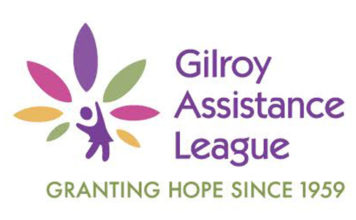GILROY
– If San Martin wants to become a city, it would be financially
solvent, it would not adversely impact Santa Clara County and it
would have various ways to develop economically, according to a
recently released report – and three local leaders are backing the
idea.
GILROY – If San Martin wants to become a city, it would be financially solvent, it would not adversely impact Santa Clara County and it would have various ways to develop economically, according to a recently released report – and three local leaders are backing the idea.
The $23,500 study was funded by the San Martin Neighborhood Alliance, a grass-roots group vying for more local control of land use decisions in the rural, buffer community between Gilroy and Morgan Hill. The study is the first step toward formally seceding from the county and incorporating as an independent city – a process that needs approval by more than 50 percent of San Martin voters and the county’s anti-sprawl agency called the Local Agency Formation Commission (LAFCO).
Gilroy Mayor Tom Springer, Morgan Hill Mayor Dennis Kennedy and County Supervisor Don Gage – a voting LAFCO member – pledged their support for a San Martin incorporation after consultants presented their study Thursday night.
“The City of San Martin would be the best greenbelt buffer we could have between Morgan Hill and Gilroy,” Springer said. “I urge you to put your boundary as close to ours as you possibly can, so we don’t have to move our lines.”
Springer’s comments come just days before a controversial annexation request is scheduled for the July 21 Gilroy City Council meeting. A high-profile developer is asking the city to make a 60-acre Day Road property on the northwest edge of townpart of Gilroy proper, paving the way for easier development of a church and a housing development or new public high school.
Many Day Road residents are opposed to the new high school site and are expected to fight against annexation of the property Monday.
In an interview after Thursday’s meeting, Springer said he would be supportive of a San Martin boundary that included that section of the Day Road property.
“Would the residents of Day Road jump at it? Probably yes,” Springer said.
At least one Day Road resident is intrigued by the possibility of becoming a citizen of San Martin.
“I am not closed to the idea. I am open to learning more about what the implications of that would be,” Day Road resident Cammie Brown said. “It certainly is interesting.”
According to Barry Shiller of the San Martin Neighborhood Alliance, San Martin boundaries could not extend much past Masten Avenue, north of the Day Road property.
Shiller says acreage south of Masten is in Gilroy’s so-called sphere of influence – an area independent of a particular city that is still impacted by that city. Since Day Road is in that sphere of influence, it would be difficult, if not impossible, to become a part of San Martin.
“Even if we wanted to expand the boundary that much, I don’t believe we ever could,” Shiller said.
The consultants, Berkeley-based Economic & Planning Systems, based their study on a boundary that includes Middle Avenue to the north, New Avenue to the east, and a southwest boundary that wavers as far south as Masten Avenue and well west of Santa Teresa Boulevard.
Shiller said the actual boundary would likely include Maple Avenue to the north and all of Masten Avenue to the south.
“I’m excited about this chance for a little more self-determination. It makes it hard for anyone to make us a dumping ground,” said Charles Logan, a 13-year San Martin resident. “When you’re trying to get your voice heard they don’t hear a city by the size of a city. They have to deal with you as a city, period.”
There are several steps proponents of an incorporated San Martin must now take to become a city.
The San Martin Neighborhood Alliance will now enter a public outreach phase. The group wants to hold block parties, partly to take public comment regarding incorporation and partly to acquire petition signatures from 25 percent of the town’s voters – one of LAFCO’s requirements.
“I’m quite sure there are questions we (the San Martin Neighborhood Alliance) never thought of,” chairperson Sylvia Hamilton said. “We need to hear from everybody in the community. After all, that’s why the alliance formed in the first place.”
Perchlorate contamination, a lawsuit over increased airport hangars, the expansion of a waste transfer station and the development of a fish distribution center triggered political activism from the grassroots group.
Although the county and Gage have been targeted by the group over more than one of those issues, the Supervisor expressed his desire to see San Martin incorporate Thursday.
“We will give our full cooperation,” Gage said. “I see nothing in this study that would make the county want to stand in your way.”
However, Gage went on to caution residents that a $156 million deficit would limit the level of support the county could provide.
The county’s fiscal health is crucial to San Martin incorporation because state law requires a forming city to prove its secession will not harm county coffers. The study states that “revenues transferred to the new city (from the county) do not exceed the expenditures transferred.” It also predicts income from property tax, sales tax and other fees will exceed city expenses each year of the next decade.
Richard Berkson said San Martin does run the risk of not having enough reserves to meet the state’s “rainy day” fund requirements. However, expanding commercial development, establishing a hotel room tax at the CordeValle country club and other revenue-generating actions could add to reserves.
The incorporation study assumes 5,800 residents will make up the city of San Martin.













